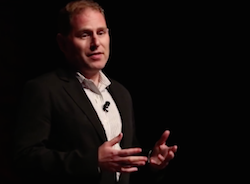[A GUEST POST by Paul Rosen, MD]
Millennial medical students are starting their third year clerkships in hospitals around the country and are asking: Where is the cutting age technology I am used to? Where are the seamless communication systems? Where is the user experience?
The students are evaluating the care systems they are asked to inherit…and thinking twice.
[A GUEST POST by Paul Rosen, MD]
Millennial medical students are starting their third year clerkships in hospitals around the country and are asking: Where is the cutting age technology I am used to? Where are the seamless communication systems? Where is the user experience?
The students are evaluating the care systems they are asked to inherit…and thinking twice.
At the medical school at Stanford University, 35 percent of graduating students are forgoing residency training and taking jobs in start-ups instead. The cultures they see outside of health systems resonate more with their values.
Consumers are asking the same questions of the industry. And some progressive-thinking health systems are reaching to other industries for advice.
A report from McKinsey titled, Debunking Common Myths About Healthcare Consumerism, finds that consumers do not lower their high expectations for service, convenience and value when transitioning from non-healthcare industries to healthcare.
When they leave their technology-driven user experiences from other industries, they seek the same offerings when it comes to healthcare.
Health systems that want to deliver the best in terms of patient safety, quality and experience should consider looking outside their own industry for benchmarking. Review the industry data:
- Patient safety: over 400,000 deaths in hospitals due to medical errors each year, making medical errors the 3rd leading cause of death in the Unites States
- Patient quality and reliability: recommended care is delivered 70 percent of the time
- Patient experience: Out of 3,500 US Hospitals, just 251 (7 percent) received a 5-Star rating on HCAHPS scores
Health systems that want to provide the best results for their patients should consider breaking free from the constraints of their own industry. Elite systems should look to the lessons of elite performers, regardless of the industry.
- For safety, look to companies like Dow Corning, BASF, Lockheed Martin and Herman Miller
- For quality and reliability, look to Costco, Under Armour, Intel, Lego and 3M
- For lean thinking and the Toyota Production System, look to Theda Care and Seattle Children’s
- For consumer experience, consider Apple, Marriot, Trader Joe’s and Ace Hardware.
Looking at high performers in other industries could sound like heresy to some. Cultural change is no easy task.
A great deal of skepticism is vested in the fear that the lessons of others don’t apply to us in healthcare. Consequently, physician buy-in remains a struggle at many healthcare systems.
But the voice of the consumer is becoming louder in its request that we match the safety, quality and service of the other industries they encounter.
In healthcare, we typically do not seek the lessons from other industries. We may need a change in mindset so that we can learn about the best practices others are using. Our patients not only demand, but deserve, the best from us. And embracing benchmarking means cultural changes and thinking outside the healthcare box.
Please let us know what you think. Have you adopted benchmarking practices?
Author information
The post Benchmarking: The Case for Looking Outside the Healthcare Box appeared first on Healthcare Success.






